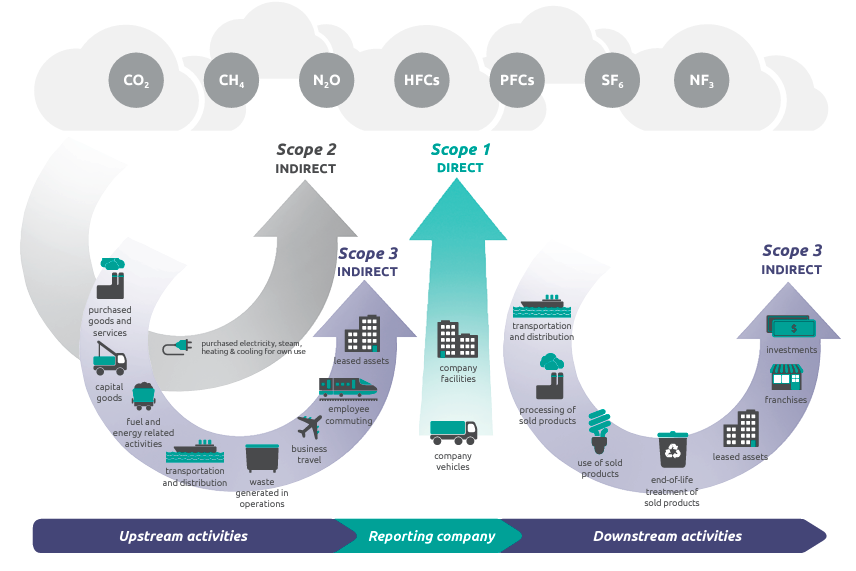A warming climatic system is expected to impact the availability of necessities like freshwater, food security, and energy, while efforts to redress climate change, both through adaptation and mitigation, will inform and shape the global development agenda in the coming years. The links between climate change and sustainable development are strong. Poor and developing countries, particularly least developed countries, will be among those most adversely affected and least able to cope with the anticipated shocks to their social, economic, and natural systems.
Under the 2015 Paris Agreement, 192 countries adopted an ambitious goal, which is reducing greenhouse-gas (GHG) emissions enough to limit the rise of global temperatures in the 21st century to “well below 2°C above preindustrial levels”, while working to limit global warming to 1.5 degrees Celsius. According to the agreement, based on the best available science, the world must reach net-zero GHG emissions early in the second half of the present century. This will require the transformation of economies and societies alike.
Technology to Battle Climate Change:
Technologies that are used to address climate change are known as climate technologies. Climate technologies that help reduce GHGs include renewable energies such as wind energy, solar power, and hydropower. To adapt to the adverse effects of climate change, climate technologies such as drought-resistant crops, early warning systems and sea walls are used. There are also ‘soft’ climate technologies, such as energy-efficient practices or training for using equipment.
In fact, a wide range of technologies is already available to reduce greenhouse gas emissions. Reducing energy consumption is the single most effective solution to climate change and any technology that helps with it with an affordable cost, is a remedy for this difficult issue.
SCOPE 1, 2 and 3 explained:
According to the leading GHG Protocol corporate standard, a company’s greenhouse gas emissions are classified into three scopes. Scope 1 and 2 are mandatory to report, whereas scope 3 is voluntary and the hardest to monitor. However, companies succeeding in reporting all three scopes will gain a sustainable competitive advantage in the near future.

Source: GHG Protocol
Scope 1: direct emissions
Scope 1 emissions are direct emissions from company-owned and controlled resources. In other words, emissions are released into the atmosphere as a direct result of a set of activities, at a firm level. It is divided into four categories: stationary combustion (e.g fuels, heating sources).
Scope 2: indirect emissions – owned
Scope 2 emissions are indirect emissions from the generation of purchased energy, from a utility provider. In other words, all GHG emissions released in the atmosphere, from the consumption of purchased electricity, steam, heat, and cooling.
Scope 3: indirect emissions – not owned
Scope 3 emissions represent the holy grail of emissions. They are all indirect emissions that are not included in scope 2 and occur in the value chain of the reporting company, including both upstream and downstream emissions. In other words, emissions are linked to company’s operations.
According to GHG protocol, scope 3 emissions are separated into 15 categories and one of them is called ‘upstream activities’, which is what we’re going to focus on next.
What are ‘Upstream activities’ ?

Upstream activities fall under several categories but for a lot of companies, business travel is one of the most significant to report. These are emissions from the transportation of employees for business-related activities in vehicles owned or operated by third parties. Air travel, rail, underground and light rail, taxis, buses, and business mileage using private vehicles are the most common ones. Employee commuting shall be reported as well but separately, since it results from the emissions generated through travel to work and from work. It can be decreased by using public transportation and working from home when possible. However, some professionals, especially field service staff, need to be on the field. But the people they get support, consultancy or guidance from do not need to be on the field anymore. New technologies help experts give remote guidance and support from wherever they are.
Several companies, such as HSBC (HSBA.L), Zurich Insurance (ZURN.S), Bain & Company and S&P Global (SPGI.N), have already announced plans to quickly cut business travel emissions by as much as 70%. Flights account for about 90% of business travel emissions, according to a Reuters article (https://www.reuters.com/business/aerospace-defense/corporate-business-travel-carbon-budgets-loom-airlines-2021-10-10/ ). That makes it the lowest-hanging fruit for companies setting reductions targets.
4 Steps to Take to Lower Your Business Travel Emissions:
We suggest the following 4 steps to take in order to be aware of your business travel emissions and start lowering them.
1. Measure and record your business travel emissions
Tracking your business travel, both the type and mileage, means you can calculate the associated emissions. Once you have a baseline measurement of your CO2e (carbon dioxide equivalent) emissions, you can create a mitigation strategy tied to actual figures rather than a finger to the wind guess. If your company already tracks business trips, it’s pretty easy to calculate your emissions. It is important to note that you should track business travel and daily commuting separately.
2. Turn your physical meetings and conferences into virtual when possible
Many companies have initiated using video calls right before Covid, however it became a necessity during Covid-19 lockdown days. Since virtual meetings have proven to be very beneficial, they have taken an irreplaceable place in our daily business life. Virtual meetings are now very common and tools like Microsoft Teams and equivalents are available on laptops, tablets, smart phones, and even smart wearables.
Moving physical conferences to online can reduce the carbon footprint by %90. Hybrid events, in which some participants attend in person while others attend online, could also reduce carbon footprint and energy by two-thirds by taking measures like carefully choosing a location.
3. Limit air travel and stop business class travel
A return flight from London to San Francisco emits around 5.5 tons of CO2 equivalent (CO2e) per person – more than twice the emissions produced by a family car in a year, and about half of the average carbon footprint of someone living in Britain. So, using technology where applicable and limiting air travel can substantially decrease the footprint of a business.
Flying is a high emission activity but travelling in business or first-class can be several times as damaging as seats in economy. Purely in terms of physical space, flying first class gives you a footprint around 5.5 times larger than that of an economy passenger, with a business seat clocking in at 3.5 times the economy option.
4. Integrate smart glasses and AR in your business model
Although still considered as a recent development, smart glass technology is being used and piloted in thousands of companies around the world. Hands-free videoconferencing, remote assistance, digital workflow guidance and pick-by-vision are among the top solutions that smart glasses offer.
Deskless workers and field technicians can get connected to remote experts real-time and solve issues and complete tasks more efficiently with using voice commands. The main advantage of using smart glasses is that they allow users to use their hands while doing the job or making the call. This is an important additional feature compared to other devices such as tablets or phones.
Integrating them into your business model, where applicable, with the right software capabilities, can increase the efficiency of your operations drastically. This will also eliminate the need for travel substantially, which will contribute to your goal of reducing your business travel emissions.
Iristick smart glasses are a great solution for managing out the business travel emissions. Our industrial grade smart glasses have been used by professionals in the manufacturing, healthcare, field service, oil and gas, logistics and agro-biotech sectors since 2016. They have proven to be great success in increasing efficiencies and decreasing costs and carbon footprint.
"Within EQUANS, the Iristick glasses are deployed as a tool to remotely support jr. field engineers in their work, thereby reducing travel time and transport movements. It helps EQUANS to reduce its CO2 footprint." Maurice Baart, Commercial Director Services South Netherlands at EQUANS.
If you’d like to discuss your potential use case and get guidance from our experts, feel free to contact us for a discussion, including a free demo of our glasses.